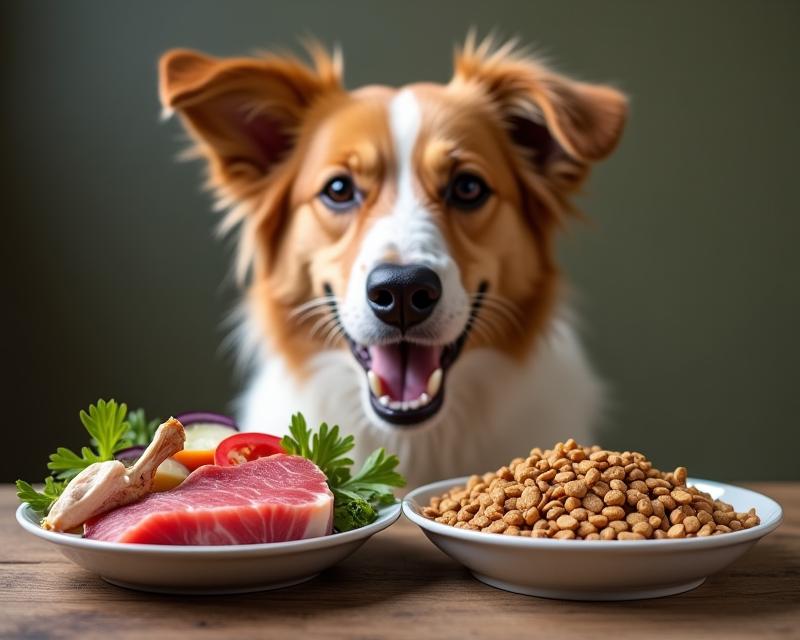Raw vs. Kibble: What's Best for Your Pet?
Publish in Nutrition el 28/06/2025 23:02
Raw Diet vs. Kibble: A Pet Owner's Guide
Choosing the right food for your furry friend can feel overwhelming! There are so many options out there, and two of the most popular are raw diets and kibble. Both have their benefits and drawbacks, and the best choice depends on your pet's individual needs and your lifestyle. Let's break down the pros and cons of each to help you make an informed decision.

Kibble: The Convenient Choice
Kibble is the most common type of pet food, and for good reason. It's incredibly convenient! It's readily available at pet stores, easy to store, and generally affordable. Kibble is formulated to be nutritionally complete, meaning it contains all the essential vitamins and minerals your pet needs. Many kibble formulas are specifically designed for different life stages (puppy, adult, senior) and breeds. You can easily find kibble tailored to your pet's specific requirements.
However, kibble isn't without its downsides. The manufacturing process, which often involves high heat, can reduce the nutritional value of the food. Some pet owners are concerned about the ingredients used in kibble, which can include fillers and by-products. While many kibbles are high quality, it's important to carefully read the ingredient list and choose a reputable brand. Also, kibble can sometimes be highly processed and may not be as easily digestible for some pets.
Raw Diet: Back to Basics?
A raw diet, often called BARF (Biologically Appropriate Raw Food), mimics what animals would eat in the wild. It typically consists of raw meat, bones, organs, and some fruits and vegetables. Proponents of raw diets believe it offers numerous benefits, including improved digestion, shinier coats, increased energy levels, and stronger immune systems. The natural enzymes in raw food are thought to aid in digestion and nutrient absorption.
The biggest advantage of a raw diet is its perceived nutritional completeness and digestibility. It’s a very natural way to feed your pet. However, raw diets also come with significant risks. The primary concern is bacterial contamination – raw meat can harbor harmful bacteria like Salmonella and E. coli, which can pose a risk to both your pet and your family. Proper handling and storage are absolutely crucial when feeding a raw diet. It’s also important to ensure the diet is balanced and complete, which requires careful planning and often consulting with a veterinary nutritionist. Finally, raw diets can be more expensive than kibble.
Making the Right Choice
Ultimately, the best diet for your pet is the one that meets their individual nutritional needs and that you can consistently and safely provide. Talk to your veterinarian to discuss your pet's specific requirements and to determine whether a raw diet or a high-quality kibble is the best option. They can help you assess your pet's health, lifestyle, and any potential risks associated with each feeding option. No matter what you choose, always prioritize high-quality ingredients and proper food handling practices!